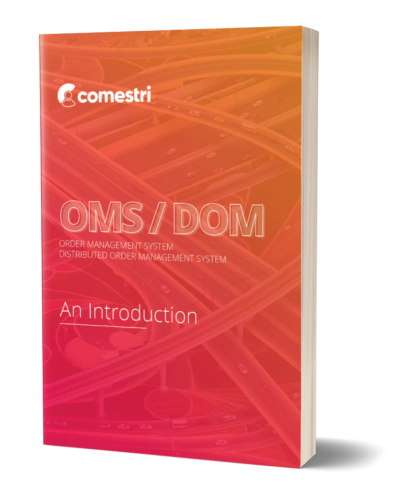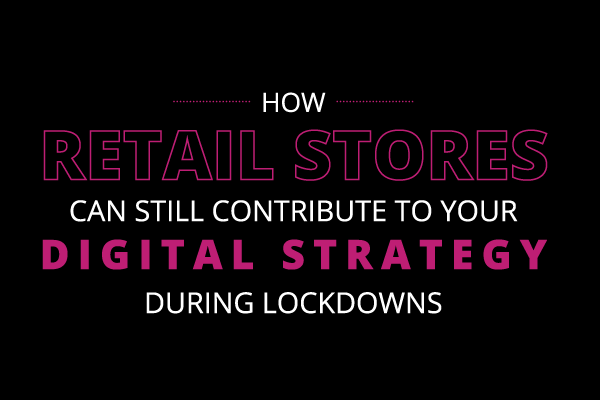How A Distributed Order Management System Can Benefit Your Business
What is Distributed Order Management (DOM)?
Distributed Order Management (DOM) is a strategy for optimising fulfilment so that orders arrive on time and at the lowest possible cost to the client. Distributed order management systems are software that automate numerous operations, such as order routing, order splitting, shipping, inventory forecasting and reordering, and inventory management, to help orchestrate this process and optimise the overall supply chain.
Consumers want to buy a product through many channels, switch platforms, and even order online immediately from within a store and have it fulfilled in a way that is convenient for them. Ecommerce platforms and physical stores must collaborate. It’s critical to combine multiple platforms without affecting the client experience.
A distributed order management system was created to make it easier to handle the increased demand for items as a result of the industry transition. Distributed order management is a means to unite your organisation in this new age of commerce, as omnichannel retail becomes increasingly complex.
Brands are being compelled to adapt just as quickly as ecommerce technology evolves with social media, apps, and third-party retail platforms. This can make inventory management more difficult, necessitating the need for backend technology that allows brands to meet this expectation in a flexible, cost-effective, and efficient manner. A DOM system gives brands the tools they need to perform excellent customer service while also increasing brand trust and happiness.
How does it differ from traditional OMS?
The difference between an OMS and a DOM is one of the most difficult and perplexing distinctions to explain in the supply chain business. Why? This is because they are referred to as two different systems rather than a single system. Without an OMS, you can’t have DOM. Let’s dispel some frequent misunderstandings and find the most straightforward method to describe the differences between the two.
The system that controls and tracks the complete order process is known as an Order Management System (OMS).
Distributed Order Management (DOM) is a feature of that system that assigns order fulfilment to the best location.
Most outdated or on-premise systems lack DOM capabilities or have very limited order distribution functionality. An OMS system lacking DOM capabilities would process orders based on the user’s manual selections. An order management system oversees the entire order process from sales processing to order input, price and credit card validation, inventory management, and invoice allocation.
Many businesses only refer to their OMS as DOM. When there is a misunderstanding between the two, this happens. As previously stated, DOM is the OMS’s optimised fulfilment component that handles and tracks the whole order process. We now know that OMS can function without DOM. To emphasise that they have the sophisticated element of the order management system, many organisations refer to OMS solely as DOM.
Does your business need Distributed Order Management?
The fact is that, in today’s business environment, all retailers should adopt a distributed order management system. In terms of retail management, it has become the new normal.
But how can you know when it’s appropriate to employ DOM? It depends on where you are in your company’s lifecycle and where the most friction exists. The retailers who will profit the most from a DOM are those with:

Like to learn more about Order Management Systems? Check out our eBook: OMS / DOM: An Introduction.
What are the benefits of DOM?
Distributed order management provides merchants to have more control over supply chain management, order coordination, and access to a real-time picture of orders being processed and inventory in transit by offering them a more comprehensive perspective of their supply chain. As a result, organisations can benefit from more flexibility as well as increased efficiency and effectiveness. They permit this because they provide numerous advantages that ordinary OMS do not.
Multiple Fulfillment Processes
Legacy OMS may only connect to a few number of shipping suppliers, forcing organisations to rely on third-party software to obtain more flexible shipping alternatives. Each of these add-ons has a price, which adds to the system’s overall cost. It’s a smoother procedure and lot easier and more controllable when you use a central hub with the capabilities to handle all order fulfilment. Split orders are also possible with distributed order management, lowering shipping and fulfilment costs across all channels. This enables more specified workflows and detailed results monitoring.
Cross Channel Integration
With dispersed order management, disparate sales channels and the systems they employ may be merged significantly more successfully. Even when numerous channels and particular store/warehouse locations are taken into account, inventory procurement becomes more easier. This guarantees that fulfilment data is precise and accurate. If you utilise a traditional OMS, you’ll have to manage various systems, which will delay down updates and give you a skewed picture of inventory status in real time.
The Customer Encounter
Poor inventory and cost management might put a company at risk of not being able to fulfil orders. Profits will slow as a result of being out of stock. A distributed order management system can help overcome this challenge. It’s considerably easier to foresee and react to unexpected circumstances when you have a unified picture of both inventories and suppliers. You have significantly more control over giving your clients with what they need, when they need it, if you can track inventory across different channels.
Global Inventory Visibility
Distributed order management applications will enable for increased global inventory visibility. Consumers can order and get products from anywhere if your overseas warehouses and 3PLs are connected to your system.
The Cloud
Cloud-based distributed order management solutions are available. This provides the framework for brands to grow. Because of the cloud framework, upgrades to the DOM system are immediately available to clients without affecting the service. It also allows users to log into the system from any computer, allowing data to be viewed by any team member. This also delivers a network-based solution that improves data processing, performance monitoring, and business plan execution. It becomes easier to review and analyse more sophisticated predictions, and automation can help to speed up the process even more.
Distributed Order Management Software Best Practices
You’ll need a clearer understanding of what you want to achieve in order to choose the best-distributed order management solution. When it comes to selecting the system that is best for you, your organisation, and your future growth, there are a few crucial questions and components to consider. It entails following a set of well-defined steps.
1. Establish Goals and Priorities
This is something that needs to be discussed within your company. Take the time to figure out what you want your new system to accomplish. Include every department in your corporate structure, and don’t forget to talk to your suppliers about your expectations and ambitions. To choose the distributed order management system that best meets your demands, you must have a clear focus.
By asking as many questions as possible, you will have a much clearer image of your requirements, as opposed to features and services that are only great to have. Think about how you’d respond to the following questions:
In terms of inventories, what are your success metrics? Do you want to lower your inventory carrying costs, produce more accurate inventory counts, or increase inventory turnover? The more specific your objectives are, the easier it will be to select the best DOM.
What are your expansion plans? You’ll want to pick a tool that will help you keep on track with your goals and manage them more effectively.
What percentage of your sales are seasonal? The presence of peak and off-peak periods can have a significant impact on stock management. If your company relies on seasonal sales, make sure your inventory management software can handle it.
2. Request for Proposal
You’ll need a vendor for your distributed order management system, and you can streamline the selection process by writing a proposal. That’s because it’ll include both the main features you’re looking for and the technical requirements you’ll require. The following are important components to mention in your proposal:
- SKUs for order volumes
- The vendor landscape you have now
- You’re presently using the following software, hardware, and networks:
- A timeline for the acquisition of systems
- A detailed description of your training method
This will provide technical specs to both you and your DOM provider, allowing you to rapidly assess if they can meet your requirements.
3. Do Your Homework
If you have a better understanding of the essential characteristics and limits of the various systems, you will be more satisfied with your final system selection. Find a range of DOM providers and talk to them about their systems.
It’s usually a good idea to use trials and demos of the systems you’ve reduced down at this point. This allows you to assess the ease of use and practicality of training on a new system in a far more efficient manner. Checking user reviews on sites like GetApp, G2, and Capterra is also a good idea, since this will provide you a much more unbiased perspective of the products.
It’s also worth noting that ecommerce systems like Shopify and BigCommerce include integrated product reviews. These review sections can be a great source of neutral and useful information.
4. Go Over Everything Again
Finding a solution that will always meet 100 percent of your requirements is difficult. In certain situations, you’ll need to make trade-offs to guarantee that the things you don’t have aren’t a hindrance.
Make sure you have the features and services you need to keep your company running properly. However, don’t judge inventory management software just on its own merits. Make sure your system vendor is a suitable fit for your company’s image.
Following these steps will make it easy to locate your distributed order management system. Consider as many other factors as possible to get a clear image of your particular requirements as well as what you can live without.
It’s time to ask the tougher questions now that you’ve cut down your final list of suitable software.
- Is it true that you’ll be able to automate manual tasks with this system? One of the most important aspects to emphasise in order to save time and money is automation.
- Is it possible to manage your sales across numerous channels, as well as multiple currencies and geographical areas, with this system?
- Does it provide the necessary assistance for businesses who have many warehouse locations?
- Is it feasible to forecast using reporting? For shops who are anticipating change in their industry, this will be a critical element.
- Do they have the resources to support third-party integration across the supply chain ecosystem? This should contain a dependable warehouse management system as well as accounting and fulfilment.
- Are there any new features added to the system on a regular basis?
Distributed Order Management has the potential to alter a company. Make sure you’re not relying on a legacy OMS that’s out of date. Examine the capabilities of modern solutions, and your company will be more equipped to improve the client experience.
Like to know more? Book a product demo or reach out today!


